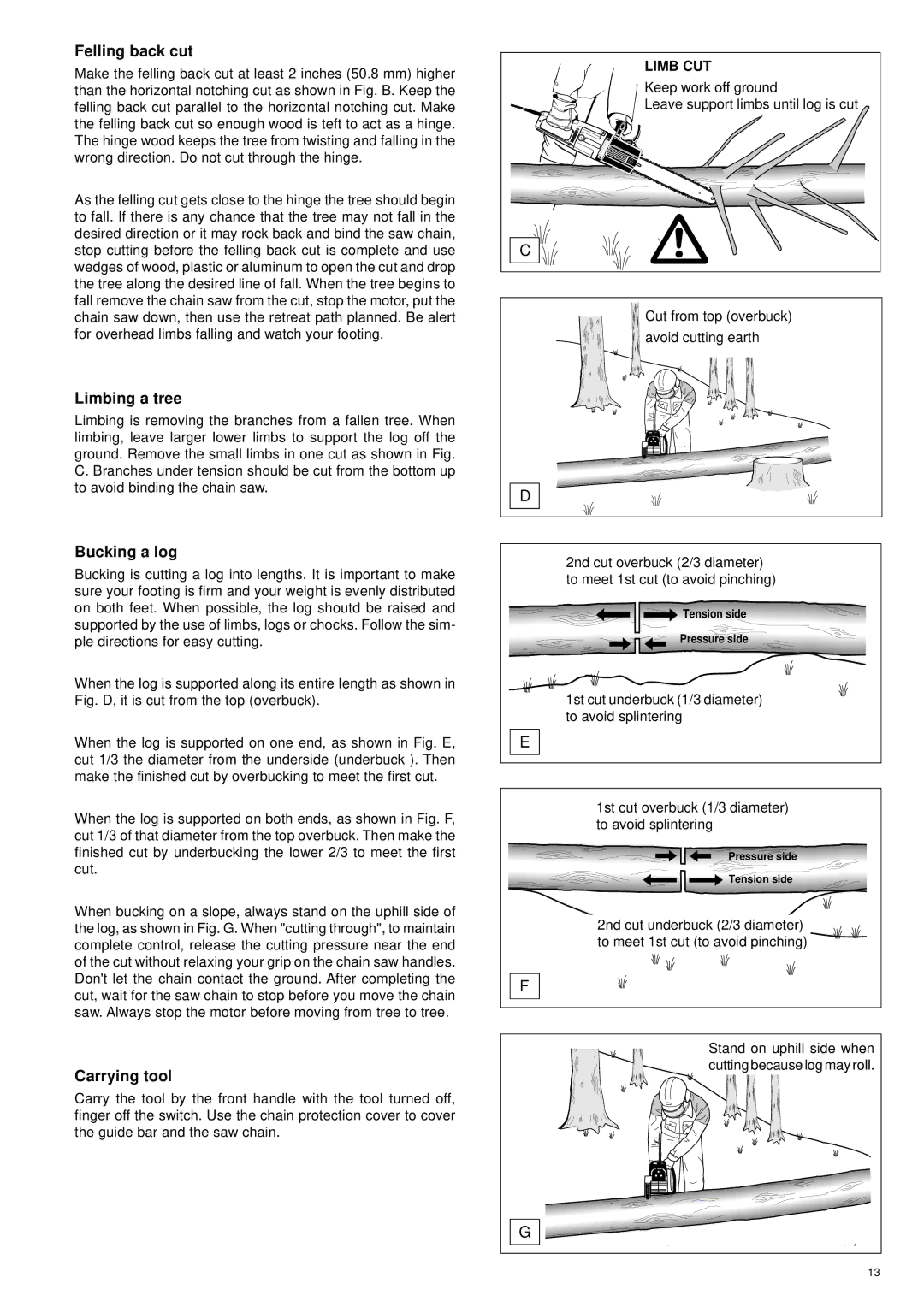UC 3000, UC 3500, UC 4000 specifications
Makita, a leader in power tools, has developed a range of electric chainsaws designed for efficiency, power, and user comfort. Among these, the UC 3000, UC 3500, and UC 4000 models stand out, each offering unique features tailored to different cutting needs.The Makita UC 3000 is an excellent choice for light to medium-duty tasks. It sports a 3000-watt motor, providing ample power for trimming branches, cutting firewood, and general garden maintenance. One of its key features is the tool-less chain tensioning system, which allows users to adjust the chain quickly and safely without the need for additional tools. The UC 3000 is equipped with an automatic chain lubrication system that ensures the chain runs smoothly and maintains optimal performance. Weighing relatively light, this model promotes user comfort and reduces fatigue during prolonged use.
Moving up in power, the Makita UC 3500 delivers a robust 3500-watt motor. This model is well-suited for more demanding jobs, such as cutting larger trees or heavy-duty landscaping tasks. The UC 3500 also features the tool-less chain tensioning system, providing an efficient and hassle-free experience. The automatic oiling mechanism continues to support the chain’s health, ensuring longevity and consistent performance. Additionally, the UC 3500 includes an ergonomic design with a comfortable grip to minimize vibrations, enhancing user control during operation and improving overall safety.
The UC 4000 takes power and performance to the next level, boasting a strong 4000-watt motor. This model is ideal for professional landscapers and those who regularly undertake heavy-duty cutting tasks. The UC 4000 combines the convenient tool-less chain tensioning system and automatic lubrication features found in its smaller counterparts but also incorporates advanced safety features such as a kickback brake. This ensures immediate chain stoppage if the chainsaw is used improperly, increasing user safety significantly. The lightweight design paired with an ergonomic handle makes this model manageable for extended periods while providing excellent balance.
In summary, the Makita UC 3000, UC 3500, and UC 4000 offer a versatile range of electric chainsaws suitable for various applications. Each model combines effective motors with user-friendly features and innovative technologies, ensuring that users can tackle cutting jobs with confidence and efficiency. Whether for casual gardening or professional landscaping, Makita's chainsaws are built to meet the demands of users at any skill level.

